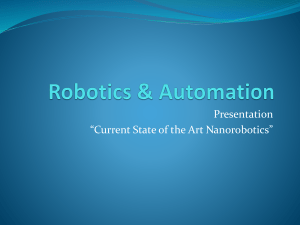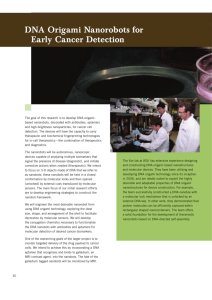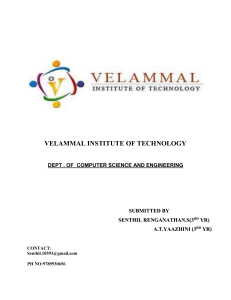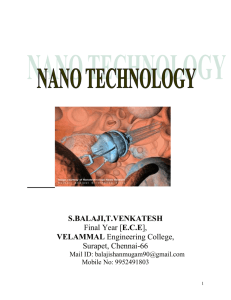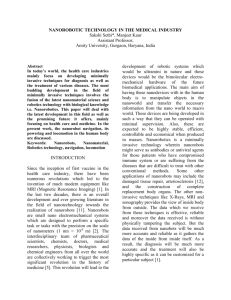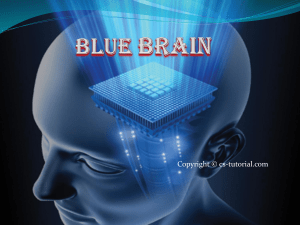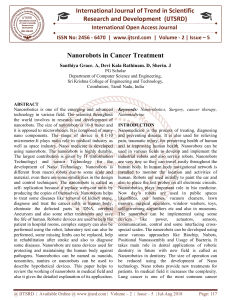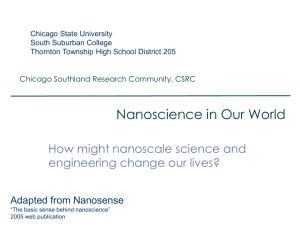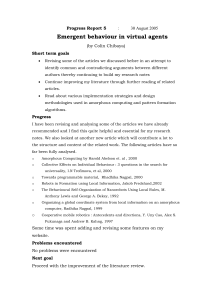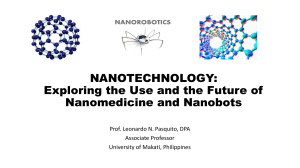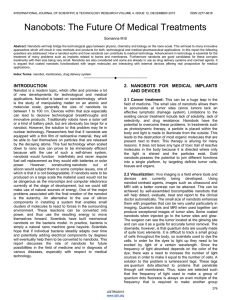Nanos
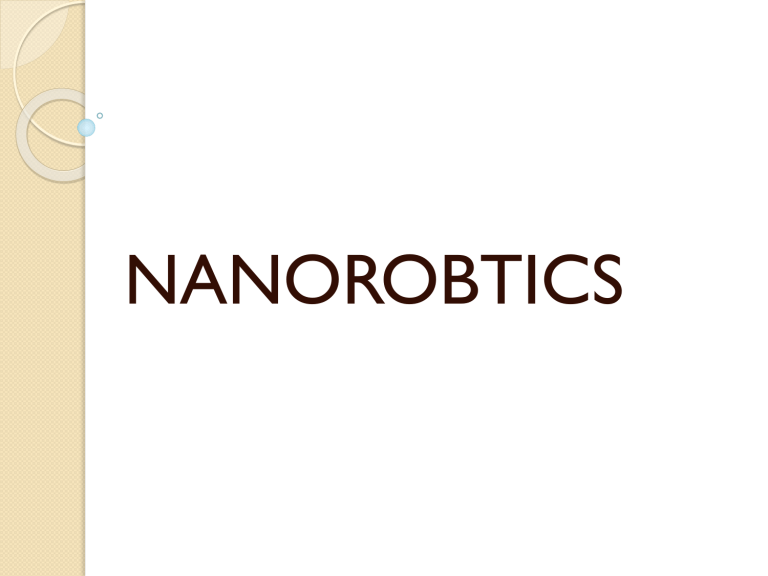
NANOROBTICS
Nanoscience very, small.
Nano-
word ‘Nanos’ meaning Dwarf. It is a prefix used to describe "one billionth" of something, or 0.000000001.
Nanometre
Nanotechnol
Nanoscience small stuff.
Nano-
It’s all sciences that work with the very small.
Nanometre
Nanotechnol
Understanding Size
1 metre
Understanding Size
10 centimetres
Understanding Size
1 centimetre
Understanding Size
100 micrometres
Understanding Size
10 micrometres
Understanding Size
1 micrometre
Understanding Size
100 nanometres
Understanding Size
10 nanometres
Understanding Size
1 nanometre
What is nanorobotics?
Nanorobotics is emerging tehnology field of creating machines or robots whose components size is on scale of a nanometar 10 - 9 meters
More specifically, nanorobotics refers to the nanotehnology which is engineering discipline of designing and building nanorobots
nanobots, nanoids, nanites, nanomachines or nanomites are also used to describe the nanorobots
Use of nanorobots
Nanorobots are still in development phase but some primitive nanomachines have been tested
For example there is is a sensor having a switch approximately 1.5 nanometers across, capable of counting specific molecules in a chemical sample
The first important use of nanorobots might be in medicine where the nanorobots will be used for identifying and destroying cancer cells which will save many lives
Nanorobots will probably also be used for “repairing” human bodies where the nanorobots will carry our body cells to the right places in our body
Bottom-up
Arranged one way, atoms make up soil, air and water. Arranged another way they make up strawberries or smoke .
Ultimate Nanotechnology would be to build at the level of one atom at a time and to be able to do so with perfection.
Nature’s Toy box.
ATOMIC LEGO
Molecular assembly is like a Lego set of 90 atoms that we can use to build anything from the bottom up! You just use every atom that you want. All of the elements in the periodic table can be mixed and matched,
Problems
As already we know nanorobot is very expensive to build because of ther complexity and very small size it would probably be necessary for very large numbers of them to work together to perform microscopic and macroscopic tasks...
So if we need a lot of them to do something and to build just one is very expenisve the problem is how to replicate them.
Scientists didn’t came up with idea how to do that...yet.
...what if they build nanorobots who can uncontrolled replicate them by them selfs in natural environment?
Then one of the most bizzare scenarious would happen the GRAY GOO.
Gray goo
Grey goo is a hypothetical end-of-the-world involving molecular nanotehnology which out-of-control self-replicating robots consume all matter on Earth while building more of themselves
Self-replicating machines of the macroscopic variety were originally described by mathematician John von Neumann and are sometimes referred to as von
Numanns machines
he term grey goo was coined by nanotechnology pioneer Eric Dexler in his
1986 book ”Engines of Creation” stating that "we cannot afford certain types of accidents."
Dexler said: imagine such a replicator floating in a bottle of chemicals, making copies of itself…the first replicator assembles a copy in one thousand seconds, the two replicators then build two more in the next thousand seconds, the four build another four, and the eight build another eight. At the end of ten hours, there are not thirty-six new replicators, but over 68 billion. In less than a day, they would weigh a ton; in less than two days, they would outweigh the Earth; in another four hours, they would exceed the mass of the Sun and all the planets combined — if the bottle of chemicals hadn't run dry long before.
Advantages and disadvantages of inorganic nanobots
Advantages:
well-understood component behaviour
ease of programming
ease of external control
unlimited chemistry (with enough energy)
Disadvantages:
difficult and expensive to make
not self-reproducing
difficulty of communicating with organic systems
must carry own (limited) payload
Advantages and disadvantages of organic nanobots
Advantages:
easy to make using genetic engineering
self-reproducing (cheap)
easily communicate with other organic systems
protein factories manufacture payload
Disadvantages:
poorly understood component behaviour
(proteins)
hard to program
limited external control mechanisms
limited to CHON chemistry and needs water
Size Matters
It’s not just how big you are
It’s what you can do with it
